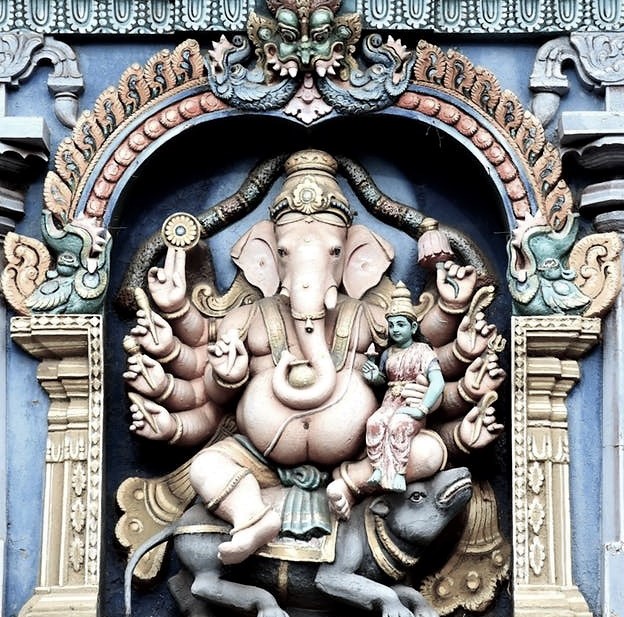- Special FeaturesFoundation YearSthala TreeTheerthamRathamArchitectureOther SpecialityIt is believed that once in 60-years the waters of River Swarnamukhi touch the Main Deity. Innumerable pilgrims witnessed the happening, in the recent past, on the 4th of December, 2005. The Most Incredible occurrence in the temple is that the Sun takes the blessings of the Main Deity by focusing his rays on Lord’s feet during the transition from Northernly-path (Utharayanam) to Southernly-path (Dakshinayanam).
- Sthala Puran
Sri Parasurameswara Swamy Gudimallam Temple, Gudimallam is a small village located in Srikalahasti Mandal, of the Chittoor district of Andhra Pradesh, India. Though a small village, historically it is very important because it has a beautiful Siva Temple which is popularly known as ” Sri Parasurameswara Temple”.
The main importance of the temple lies in the Linga which is housed in the Garbhagriha of the temple. This is supposed to be the earliest Linga discovered so far and it has been assigned to the 2nd or 1st century BC. The name of the temple is mentioned as Parasurameswara Temple in the inscriptions. These inscriptions do not refer to the original builders of the temple. But they register the gifts made to the temple of land, money and cows for the conduct of daily worship in the temple. The Black and Redware sherds of the 2nd or 3rd century AD have been brought to light during the course of excavations conducted in 1973. Potsherds of the Andhra Satavahana period (Circa 1st century AD to 2nd century AD) and large-sized bricks measuring 42+21+6 cms. of the same period have also been found. Hence, some historians assign the temple to the Satavahana period.
The temple called Parasurameswaraalayam was built on the banks of Suvaranamukhi river. There is a fascinating tale about this place. It runs once there was a devotee by name Parasurameswara, who was worshipping Lord Siva regularly with exceptional ardor using flowers grown in his tank nearby. The flowers were odd in shape and colours-And grand to look at. The Lord was pleased and conferred bliss on him. Seeing this unseen, a demon Chitra (Lord Brahma) one day ventured to pluck all the flowers and offered to Siva. Finding the transgression grievous, the pious Sivabhakta entered into a fierce boxing bout with the demon. When the vanquished demon was about to be crushed, Lord Siva appeared and blessed the both with their desire of Sayujyamukti – merging in Him
It`s a famous tourist temple.The Lord “PARASURAMESWARA DEVASTANAM” in 2 B.C and believed to be the first Indian temple. Within the temple premises, there are other temples “SHANMUKA” with his two wives “VALLI.”DEVASANA”, “SURYABHAGAVAN” Temple and temple for “ANANDHAVALLI AMMAVARU”.
- Architecture
Renowned for its earliest extant Sivalinga in India datable to second/ Third centuries B.C. The main Temple consists an apsidal shrine in low level with ardha mandapa and mahamandapa in front, all facing east and each higher than the previous one. The main entrance to the shrine is, however, from the south side of maha mandapa when the wall enclosure is added by an ornamental pillared porch (Dwarapala). The main shrine is closed all around externally by a peristylar cloister, The vimana over the shrine is of brick, hollow inside and is apsidal on the plan in elevation resembling a linga nut hence termed as lingakruti vimana. The sanctum has a false ceiling over wooden joints. A dew shrine is added at North-West corner other minor shrines within the prakara include Kartikeya and Subramanya. A plain gopuram is provided at the western entrance of the compound wall. The stone temple complex is in late Pallava / Bana and Chola Style and a good number of inscribed records speak of the perpetual gifts made by the kings, The earliest belonging to the bana’s (A Fendatory Royal family under the later Pallava’s, Circa 842-904 centuries A.D) and latest of the time of Yadava Devaraya (A.D. 1346). Inscription of the tome of vikramachola refers to the complete rebuilding of the temple in 1126 A.D. along with gopuram and the well.
The Linga on its frontal facet a relief figure standing Siva. He has two hands, The right one holds a ram by the hind legs, Head hanging downwards. On the left, a globular pot is held and a battle axe (Parasu) rests in the left shoulder. The linga is fixed within two stone rings during the earliest phase inside the sanctum which served as arghapitha. The standing form of the god reveals Vedic and proto puranic concepts of Rudra. He is shown standing on the shoulders of a crouching dwarf yaksha whose features ate unique. He is seated on the knees body shrunken and light teethed.
- Alankar of Deity
- Prayers and BenefitsSpecial Vratas and PrayersOfferings to DeityStotras and Mantras
- Festivals
- Sodasha Upcharas
- Prasadhas
- Social ActivitiesAnnadhanMarriageEar BoringHead ShaveDanaasEducation FacilitiesSocial DrivesOther Activities
- Arjita Seva
- Tags

